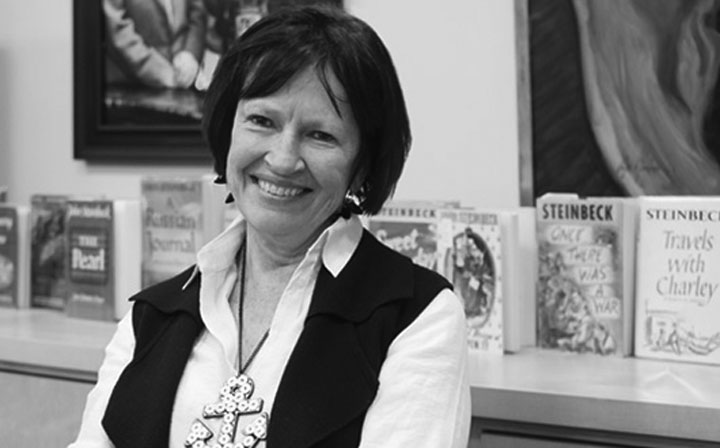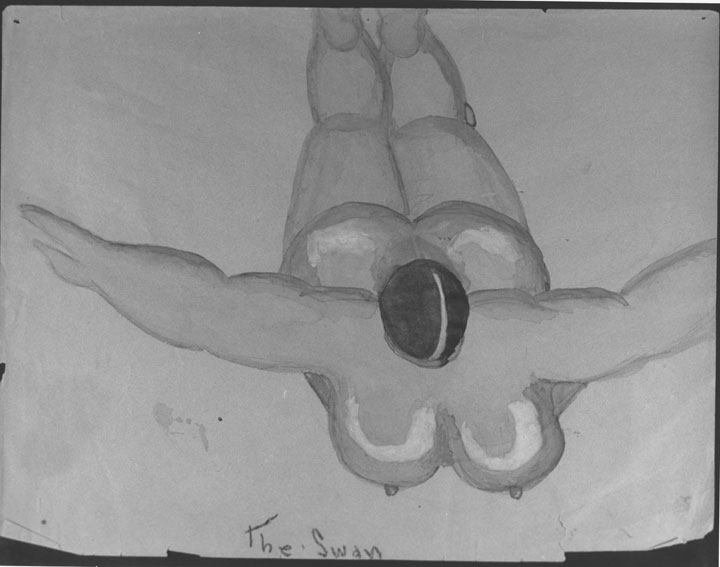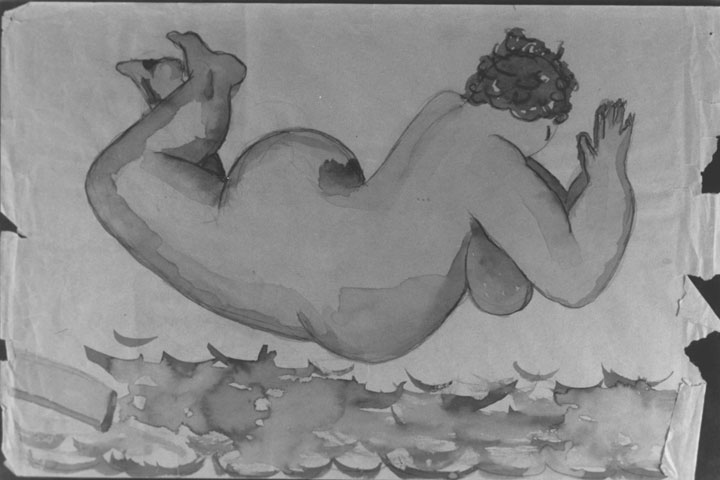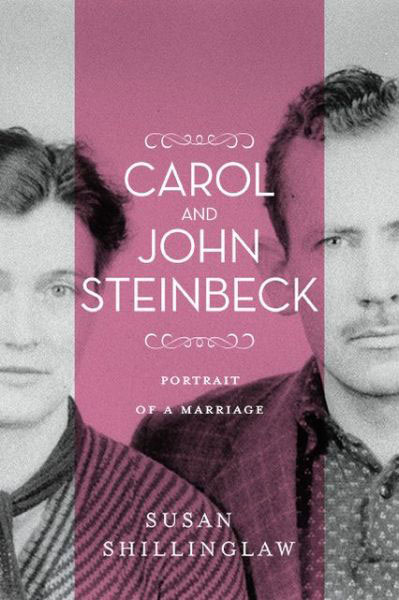 Nobody knows more or writes better about the life of Steinbeck than Susan Shillinglaw, professor of English at San Jose State University, former director of the Martha Heasley Cox Center for Steinbeck Studies, and scholar-in-residence at the National Steinbeck Center. Her superb scholarship and elegant style are equally evident in Carol and John Steinbeck: Portrait of a Marriage, the biography of Steinbeck’s marriage to Carol Henning, a Jazz Age rebel with a Great Depression conscience. As Shillinglaw observes, John and Carol were no Scott and Zelda. But their dramatic story book reads like a novel—unfortunately, one with a similarly unhappy ending.
Nobody knows more or writes better about the life of Steinbeck than Susan Shillinglaw, professor of English at San Jose State University, former director of the Martha Heasley Cox Center for Steinbeck Studies, and scholar-in-residence at the National Steinbeck Center. Her superb scholarship and elegant style are equally evident in Carol and John Steinbeck: Portrait of a Marriage, the biography of Steinbeck’s marriage to Carol Henning, a Jazz Age rebel with a Great Depression conscience. As Shillinglaw observes, John and Carol were no Scott and Zelda. But their dramatic story book reads like a novel—unfortunately, one with a similarly unhappy ending.
From Jazz Age Joy to Great Depression Decline
Meticulously researched over a period of 20 years, Shillinglaw’s life of Steinbeck and his first wife, from Jazz Age joy through Great Depression decline, describes a companionable marriage of equals and opposites, revealing intimate details of a relationship that began in 1928, at the cusp of Steinbeck’s career, and dissolved following the success of The Grapes of Wrath. Using Steinbeck’s phalanx metaphor, she demonstrates how such a relationship becomes a kind of third person, with characteristics, dynamics, and patterns of development and decay distinct from both partners and ultimately beyond their control. Her subject is the life and death of a relationship, but her protagonist is clearly Carol, a shining figure in the life of Steinbeck who has remained in her husband’s shadow until now.
Years after his divorce from Carol, Steinbeck advised another writer that “your work is your only weapon.” As Shillinglaw shows, John and Carol’s collaboration in Steinbeck’s signature work of the 1930s—always his work, rarely hers—was their mutual weapon against poverty and insecurity until fortune and fame—his, not hers—intervened. The title of Steinbeck’s anthem of the Great Depression, The Grapes of Wrath, was her idea. The progressive politics of the protest novels that preceded it—In Dubious Battle and Of Mice and Men—were hers before they were his. She became his muse and motivator, typist and editor, connector and companion. But the 12-year experience drained and disoriented her, leaving her ill-equipped to cope with wealth, notoriety, and competition from the woman who became Steinbeck’s second wife in 1943.
A Life of Steinbeck Story Told by the Perfect Narrator
Carol and John Steinbeck: Portrait of a Marriage is a book only Susan Shillinglaw could have written. The life of Steinbeck has been chronicled by men—notably Jackson Benson, the author of The True Adventures of John Steinbeck, Writer—with an emotional detachment from their distant, difficult subject. Unlike her husband, Carol demanded attention, engagement, and shared context, qualities that Shillinglaw brings to the story of her life before, with, and after Steinbeck. A resident of Pacific Grove and Los Gatos—towns where the Steinbecks lived for most of their marriage—Shillinglaw teaches in the city where Carol was born, raised, and rooted. Married to a biologist at the Hopkins Marine Station, the Monterey outpost of Stanford University where Steinbeck took summer courses, Shillinglaw collaborates with her husband in a imaginative summer program for high school teachers passionate about Steinbeck. The author of an upcoming book on The Grapes of Wrath, she shares context with the woman who—in Steinbeck’s words—“willed it.”
 To the credit of Shillinglaw’s publisher, her life of Steinbeck and Carol Henning’s marriage is affordable, attractive, and accessible to non-academics. Unfortunately, small inconsistencies were overlooked, marring an otherwise masterful achievement. Several sentences introduce names left unexplained until later, end without punctuation, and place closing quotation marks on the wrong side of the period. End notes are copious and unobtrusive, but the name of Dick Hayman is printed twice in a sentence thanking sources, and the index seems incomplete. (Mary Dole, the pineapple-heiress acquaintance of Carol’s estranged sister Idell, is included, but Bennett Cerf—the publisher who arranged the Steinbecks’ introduction to the poet Robinson Jeffers—is omitted.) Jazz Age children of musical families, Carol and John both loved music, a pursuit—like Carol’s drawing and sculpting—documented in satisfying detail. Yet Carol’s talented mother is described as attending music school in San Jose to improve her “piano techniques,” not technique, and Gregorian chant (a collective noun, like opera) is referred to as “Gregorian chants.”
To the credit of Shillinglaw’s publisher, her life of Steinbeck and Carol Henning’s marriage is affordable, attractive, and accessible to non-academics. Unfortunately, small inconsistencies were overlooked, marring an otherwise masterful achievement. Several sentences introduce names left unexplained until later, end without punctuation, and place closing quotation marks on the wrong side of the period. End notes are copious and unobtrusive, but the name of Dick Hayman is printed twice in a sentence thanking sources, and the index seems incomplete. (Mary Dole, the pineapple-heiress acquaintance of Carol’s estranged sister Idell, is included, but Bennett Cerf—the publisher who arranged the Steinbecks’ introduction to the poet Robinson Jeffers—is omitted.) Jazz Age children of musical families, Carol and John both loved music, a pursuit—like Carol’s drawing and sculpting—documented in satisfying detail. Yet Carol’s talented mother is described as attending music school in San Jose to improve her “piano techniques,” not technique, and Gregorian chant (a collective noun, like opera) is referred to as “Gregorian chants.”
 Minor errors in major works can be corrected in subsequent editions. I predict that Susan Shillinglaw’s life of Steinbeck and Carol Henning’s together from Jazz Age joy to Great Depression decline—a dramatic story told by the perfect narrator—will have many.
Minor errors in major works can be corrected in subsequent editions. I predict that Susan Shillinglaw’s life of Steinbeck and Carol Henning’s together from Jazz Age joy to Great Depression decline—a dramatic story told by the perfect narrator—will have many.
Drawings by Carol Henning Steinbeck courtesy of the Martha Heasley Cox Center for Steinbeck Studies, San Jose State University.



A great review of the Shillinglaw book, Will. Thanks to you, I’m looking forward to reading it.
And I’m pocketing that advice from Steinbeck right now — “Your work is your only weapon.” Like you, I believe that weapon should always be one used in the service of good.
My best from parts east,
Joe
Thank you, Joe. You won’t be disappointed! I appreciate your email advice about linking to Amazon book listings when reviewing new books. As a noncommercial site, SteinbeckNow.com will remain ad-free and independent of revenue-producing relationships, but I agree about making books that we recommend easy for our readers to access within book-review text. When books are available directly from the publisher or author’s website, we will continue to link accordingly. Otherwise, we will link to Amazon.
Hello Mr. Ray, thank you for this review. Professor Shillinglaw’s title is available directly from our website, as well: http://www.unpress.nevada.edu/Browse/Titles/Carol%20and%20John%20Steinbeck;2263 . Thanks, Mike Campbell, marketing and sales manager, UN Press.
Your helpful reminder raises the troubling question of where to send users of SteinbeckNow.com, an independent noncommercial site, to order books. Our policy is to buy books being considered for review rather than asking publishers for free copies. As I have suggested elsewhere, academic-publisher prices are becoming prohibitive for non-institutional buyers; as I noted in this review, the University of Nevada Press is to be commended for making “Carol and John Steinbeck” affordable for the wide readership it deserves. However, I’m torn about whether to link readers to full-price sources or to Amazon. On the one hand, I want authors to benefit from sales and assume that author-share is greater when purchasers buy from the publisher. On the other hand, Amazon provides fast, efficient service and offers helpful information about other books of interest on the subject. Author, reader, and publisher thoughts about this question would be appreciated. Thank you for raising the issue.
To begin, I want you to know that I’ve been looking for information on Carol Steinbeck for a long time. Carol Henning Steinbeck always seemed such a fascinating character and deserved some recognition for Steinbeck’s success. With little available information about her, how could any Steinbeck fan feel they knew all they needed to know about him without learning the role she played? And Dr. Shillinglaw came through in spades. It took less than 2 minutes from becoming aware of the book and placing my order through Amazon.
Just a few thoughts:
1) Based upon a few mentions in the book, I’d like to know where Jung described the “third person” in a relationship as attributed to Steinbeck. I have read every volume of Jung’s collected works and this phrase does not exist in any one of them.
2} Jung is also referred in Dr. Shillinglaw’s book as the source of the term for the highest level of human evolvement, called, “Self-actualized”. Jung never mentioned this term either. The term was first used in, Maslow’s “hierarchy of needs”. It is a theory in psychology proposed by Abraham Maslow in his 1943 paper “A Theory of Human Motivation” in Psychological Review.
3) Theorizing an individual’s psychological (functional) type sometimes is easy by observation (see the “I-speak” series from Dr. Paul Mok, out of Drake Beam Morin). But even with that instructive program, you may only form a shot-gun guess. Unless you’ve acquired a practical knowledge of Jung’s “The Structure and Dynamics of the Psyche” (1916 ~1934, CW-8, Princeton) and as a result of application and observation, you understand the “Individual Human Psyche” and interpersonal dynamics, the Persona, The Ego, and the Self, perception, judgment, and levels of individual human evolvement it can be quite difficult. If you include your own conscious and unconscious role in building your conclusion from your perceptions and judgments, perhaps it should be considered no more than a parlor game. Pigeon holing someone into a classification based simply upon such an elementary analysis, especially as it is found in available biographical text without actually observing the individual’s behavior is something that should not be given too much weight. I suspect that some may be thinking, “Oh yeah, smart guy, what about the Myers-Briggs Type Indicator (MBTI)? To consider the results of this instrument more than a parlor game, think about its construction — it asks the respondent what they would do in a specific situation and choose from four possibilities. What the respondent theorizes about their actions and reality may be dramatically different. Perhaps the survey monitor is cute and the respondent thinks their answers may impress. The response builds a table to calculate the pseudo-acronym, ESTJ, INFJ, etc. The pseudo-acronym result is then compared to a table of very brief explanations. There are some questions on the standard test that do not impact the calculations what-so-ever. Can anyone tell me where I may find any company or organization that formally relies on the survey results for critical decisions about an individual? Even though the MBTI was available during Jung’s life, he never used any typing instrument and there is a very good reason for this, as designed and applied, it is scientific only in the most elementary sense, is unreliable, and thusfar serves no important purpose. I’m willing to bet that Joseph Campbell never used it either. Are there ways of reliably determining functional type and habitual attitude? Yes there are.
4) Dr. Shillinglaw’s theory of types for Carol, John, and Ed Ricketts, are innacurate in my opinion. The reason for the friction and split between the married couple was due to (my theory) that their functional/attitudinal types were too similar for a successful four person (not three) coupling, 1) conscious male, 2) conscious female, 3) unconscious female (anima), and unconscious male, (anima). Some support for my opinion here may be found in “The Log From The Sea Of Cortez”.
5) With all due respect I don’t believe Dr. Shillinglaw’s treatment of the phalanx concept did it any favor.
Ok I have to go to the bathroom.
Wes
Thank you for your thoughts. Perhaps others have insights to share into these issues.
While Maslow did coin self-actualization as a term, Jung’s term “individuation” is a very close synonym. Also, to say Jung did not make use of a typology instrument is certainly true, but odd not to note Jung’s quite important work in the field (Psychological Types, 1923), from which the mother-daughter team shaped the Myers-Briggs.
https://www.spectator.co.uk/2014/01/carol-and-john-steinbeck-by-susan-shillinglaw-review/
–a very helpful review of this book.